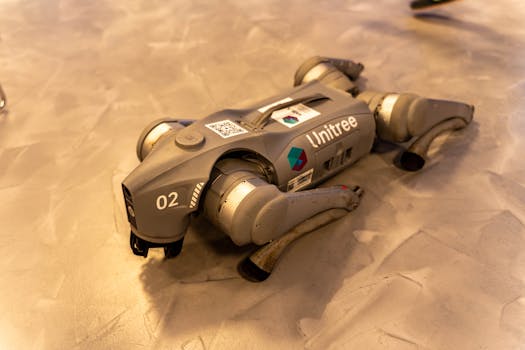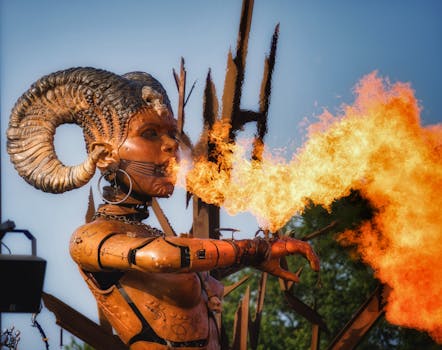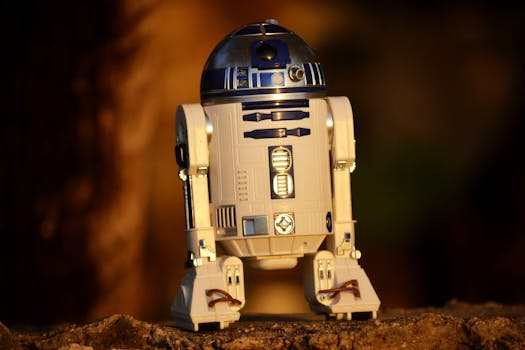The Essential 5e Automaton D&D Guide: Building Your Clockwork Companion
Introduction
Ever dreamt of adventuring with a loyal, mechanical ally by your side? One that doesn’t need to eat, sleep, or worry about pesky things like morality? If you’ve been exploring the vast world of Dungeons & Dragons 5th Edition and found yourself drawn to the clanking gears and intricate mechanisms of a manufactured being, then this guide is for you. We’re diving deep into the fascinating realm of the automaton 5e, exploring what these constructs are, how they fit into your games, and how you can bring them to life at your table. Get ready to discover the possibilities of building, playing, and encountering these incredible creations!
Section 1 – What Exactly is a 5e Automaton?
In the grand tapestry of D&D 5e, an automaton is essentially a magically animated construct. Think of it as a golem, but often with a more refined, intricate, and sometimes even humanoid form. These beings are not born; they are built. Crafted from metal, wood, stone, or even more exotic materials, their existence is fueled by enchantments and the will of their creator. They are the ultimate servants, guardians, and sometimes even companions, capable of performing tasks with tireless precision.
The appeal of an automaton 5e lies in their sheer versatility and the unique roleplay opportunities they present. They can be anything from a hulking bodyguard to a nimble scout, a loyal butler to a formidable war machine. Their lack of biological needs and their inherent obedience (or lack thereof, depending on your design!) offer a refreshing contrast to flesh-and-blood adventurers. Whether you’re a Dungeon Master looking to populate your world with unique NPCs or a player seeking a truly distinct character concept, the automaton 5e offers a wealth of creative potential.

Section 2 – Bringing Your Automaton to Life
Creating or playing an automaton in D&D 5e can be an incredibly rewarding experience. Here’s a breakdown of key aspects to consider:
- Origins and Creation: Where did your automaton come from? Was it meticulously crafted by a master artificer, discovered in ancient ruins, or perhaps a relic of a bygone civilization? Understanding its creation story can heavily influence its personality and motivations. Consider the materials used – are they common metals, rare alloys, or something entirely alien?
- The Automaton Stat Block: For DMs, the Monster Manual offers several construct stat blocks you can adapt. For players, races like the Warforged from Eberron: Rising from the Last War are the closest official representation of an automaton. However, you can also work with your DM to create a unique race or even a homebrew stat block for your automaton character. Focus on its inherent resistances and immunities, which are common for constructs.
- Sentience and Personality: This is where the magic truly happens. Is your automaton a blank slate, eager to learn? Does it possess a rudimentary personality, or is it programmed with specific directives? The interaction between its mechanical nature and any emerging sentience is a goldmine for roleplaying. Don’t shy away from exploring its evolving understanding of the world.
- Abilities and Quirks: What makes your automaton unique? Does it have a built-in tool, a unique sensory organ, or a peculiar way of moving? These details can set your automaton 5e apart. Think about specific mechanical abilities that could be flavored as part of its design, like a built-in grappling hook or a specialized scanning device.
- The Master-Servant Dynamic: If your automaton is controlled or serves a creator, this relationship can be a central theme. Is it a willing servant, bound by magic, or something more? Exploring this bond can add depth to your character or the NPCs in your campaign.
- Customization and Upgrades: Automata are inherently customizable. As characters or as NPCs, they can be upgraded with new components, enchantments, or even reprogrammed. This allows for significant character progression beyond typical leveling.
- The Automaton’s Place in the World: How are automata perceived in the campaign setting? Are they common laborers, feared war machines, or rare marvels? This context shapes how NPCs react to your automaton character or how you can introduce them as elements of the world.

Section 3 – Automaton Encounters and Player Characters
Whether you’re a DM crafting an encounter or a player building an automaton character, understanding their place in the game is crucial. Let’s look at some practical applications.
Automaton NPCs and Monsters
Dungeon Masters can utilize automata in a myriad of ways:
- Guardians: Ancient automatons protecting forgotten tombs or powerful artifacts are a classic trope. Think of a brass automaton, tirelessly patrolling a wizard’s tower.
- Servants: Ubiquitous, if not always friendly, mechanical servants in technologically advanced cities or noble estates. A clockwork butler might serve drinks, but also report on your activities.
- Weapons of War: In settings like Eberron, warforged (a type of automaton) are integrated into armies. Imagine encountering a hulking siege automaton on the battlefield.
- Companions: A loyal automaton that has developed sentience and bonded with its wielder. This can be a heartwarming or tragic element.
- Mysteries: Discovering the purpose and origin of a dormant automaton can be a quest hook in itself. Uncovering the secrets of a long-lost automaton civilization could lead to an entire adventure arc.
For example, imagine a campaign where players must deactivate or outwit a rogue automaton security system guarding a vault. The automaton could have specific, predictable patrol patterns, but also devastating offensive capabilities. You might need to disable its power source or find a way to bypass its sensors. This requires tactical thinking and understanding the automaton 5e’s strengths and weaknesses.
For players, the Warforged race is the most direct route. They offer innate durability and a unique perspective on life, having been built for war. However, homebrewing your own automaton character can be even more exciting. You could create a Golem-like creature with a specific elemental affinity or a more whimsical, clockwork bird. Collaboration with your DM is key to ensure your concept fits the campaign world.
Consider this scenario: a player wants to play a “Gnomish Tinker-Bot,” a small, scurrying automaton built by a gnome artificer. It might have abilities like repairing objects with its integrated tools, or projecting light. Its backstory could involve escaping its creator’s lab to experience the world. This automaton 5e character would offer unique utility and a charmingly literal outlook on life.
If you’re interested in the mechanical aspects of D&D, you might also enjoy our D&D Artificer Guide, which details classes focused on crafting and invention!
For further inspiration on unique character builds, check out this Automaton Player Character Concept forum thread.

Pros and Cons of Automaton Characters/NPCs
| Pros | Cons |
|---|---|
| ➕ Immune to many conditions (poison, disease, exhaustion) | ➖ May have difficulty with social interactions due to lack of emotion |
| ➕ Tireless and can operate indefinitely with proper maintenance | ➖ Vulnerable to specific damage types (e.g., lightning, adamantine weapons) |
| ➕ Highly customizable with upgrades and modifications | ➖ May be perceived as tools or property by some societies |
| ➕ Offers unique roleplaying opportunities due to non-biological nature | ➖ Potential for specific weaknesses or vulnerabilities based on construction |
| ➕ Can have innate mechanical abilities not found in biological races |
Conclusion
The automaton 5e offers a truly unique and engaging element to any Dungeons & Dragons campaign. Whether you’re envisioning a stoic protector, a curious explorer, or a relic of forgotten technology, the potential for creativity is immense. By understanding their origins, unique abilities, and place within the game, you can bring these mechanical marvels to life in unforgettable ways.
So, don’t be afraid to get your hands dirty with gears and enchantments! Start sketching out your automaton concept, discuss it with your Dungeon Master, and get ready to experience the world of D&D from a whole new, perfectly calibrated perspective. The adventure of building your perfect automaton 5e ally awaits!